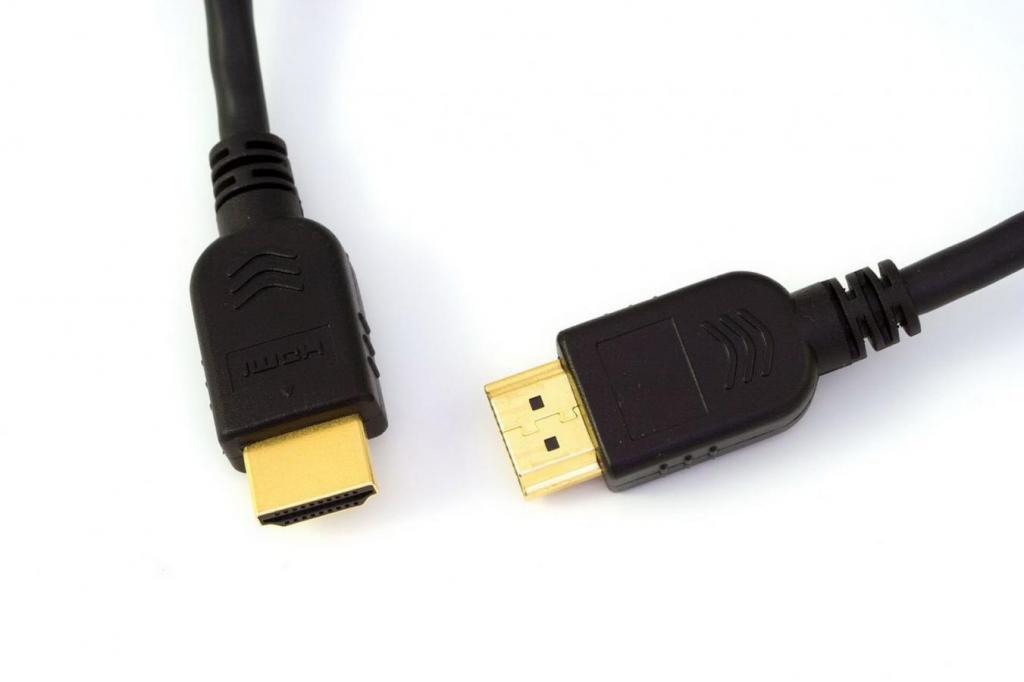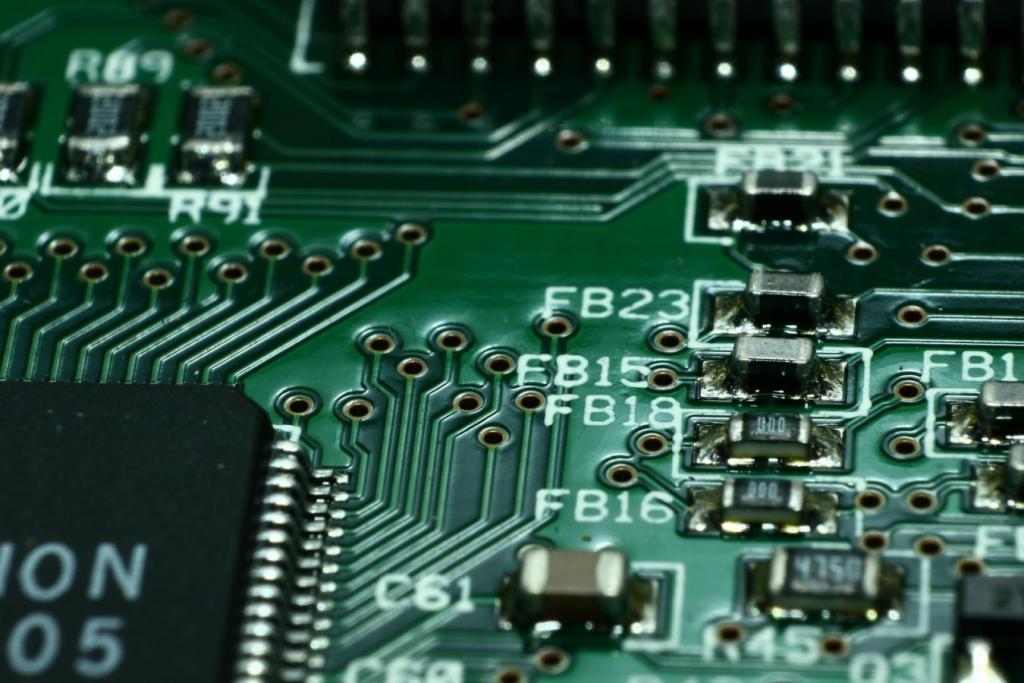GPU Introduction

The GPU, short for the Graphics Processing Unit, is the processing chip dedicated to computing every visual information to display on a monitor. The GPU is the second most important component of a computer system, after the CPU. It can be either:
- Integrated: Combined with the CPU
- Dedicated: A separate add-on electronic card
What is called the graphics card or video card is the physical container housing the dedicated GPU with its electronic board, memory, heatsink and fan(s). It is often presented with a decorative plastic cover which is part of the heat dissipation system design.
For 3D artists and gamers alike, it is essential to have a dedicated video card, that is not integrated with the CPU or motherboard. However, for more typical use such as internet and document-typing, an integrated graphics chip can be sufficient. In this article, we will cover the requirements to maximize your investment in a graphics card, aimed more specifically at 3D artists. This isn't exactly the same as gamers, because it is not required to get the best and latest, but instead, what is most performing at the best price. Read on...
Role of the graphics card
The graphics card handles every aspect of 3D visual display on your computer.
- Allows to physically connect the computer with the monitor(s).
- Handles every 2D image manipulation and texture software
- Permits smooth real-time animations on your computer, such as gifs, videos, interactive websites, etc.
- Produces every 3D graphic for video games, screen-savers, google earth, etc.
- Used for 3D viewports, inside of every 3D software package, to visualize the work in real-time before it is rendered
- Runs render engines to allow the creation of assets for games and real-time 3D (unity, cry engine, unreal...)
- Can be used to renders the final images of a 3D project, on a few newer render engines
Using a GPU for 3D Renders
Graphic cards of today are so powerful that game creators are now able to create visuals approaching near film quality in real-time. Does that mean you can use a video card to render image files for your 3D projects in real-time? Yes and no.
The problem is that video card, display information on the screen with speed, but not with a perfect precision. It can skip some parts, or some frames to keep up with time. But 3D content in video games is highly optimized ahead of the players coming in, to make sure everything is both smooth and as-intended. It is in many aspects, pre-rendered and 'baked' by a CPU beforehand
However, for animation films and VFX projects, each image has to be 'picture-perfect' for the director with a high level of quality. In order to achieve that using the tremendous power of today's graphic cards, NVIDIA has opened its architecture to customization by enabling scripting on CUDA cores. This has removed the limitation of real-time display, in order to use graphic cards like a processor, to render complex raytracing effects.
Therefore, GPUs can now also be used to render the final images of high-end movies. It is arguably faster, but it is not real-time. Some render engines, like RedShift support GPU rendering with multiple cards at once, as a GPU render farm. Other renderers, like V-Ray, are going the way of hybrid GPU acceleration, which renders both on the CPU and GPU.
Aspects to Consider
Power Wattage
The video card is the most power-hungry component of your computer. Depending on the type of card you choose, it can be more demanding than the CPU. They usually start around 100W and can sometimes go up to 300W each. Take good note of the wattage of the GPU to find an appropriate capacity for your power supply unit (PSU).
Finally, they also produce a lot of heat, which should be dissipated with a good case and chassis fans.
Motherboard Connection
When you buy a GPU, you should also double check the compatibility of a few other components at the same time. Your motherboard, power-supply (PSU) and monitors must be connected together properly for the computer to work. There are different types of connectors between each of them, that can have a varying amount of pins, and they are not inter-compatible.

- You need to make sure that your PSU has the power connector needed for your GPU.
- You should check to make absolutely sure that the motherboard has the right ports to fit the card into
- PCI (obsolete)
- AGP (obsolete)
- PCI-E (PCI-Express):
- 1.0, 2.0, 3.0 (recommended)
- x1, x2, x4, x8, x16 (recommended)
Form Factor
A dedicated modern video card is huge! In fact, it's almost a computer in itself, with it's own processing chip, memory and motherboard. They often take 2 slots in height, within a computer tower, but sometimes even 3 for the highest end. Make sure your case has enough vertical space to fit the card, and that no other add-on card gets in the way.
Monitor Connections
The graphics card will determine the number of monitors you will be able to connect to your computer. You should look for a video card that has the connections for at least 2 or 3 monitors. Also, make sure that the connectors will be compatible with your existing equipment.
- If you're reusing existing monitors, you should be safe by going with a card that has 2x HDMI ports and 1x DVI port.
- If you're buying new monitors, you should go with 2x HDMI and 2x DisplayPort.
Here are the different monitor connections available today.
- VGA (obsolete)
- DVI (obsolete)
- HDMI (recommended, older)
- DisplayPort (recommended, newer)
- Thunderbolt (next-gen standard)
1. VGA (obsolete)
VGA ports are now outdated. They used to be all the rage with big CRT monitors, but they don't carry sufficient bandwidth for HD resolutions, let alone 4K. However, most new connectors can be retrograded to VGA if needed, like DVI and mini-DisplayPort, but they lose the HD signal quality.
2. DVI (obsolete)
An HD-ready cable retro-compatible with VGA and forward compatible with HDMI. This has been obsoleted by HDMI.

3. HDMI (recommended)
We recommend HDMI because it is still the most common type of connector amongst monitors and video cards of all price ranges. It is a current, but ageing standard. It has the advantage of being retro-compatible with older DVI monitors and newer DisplayPorts, through a simple cable conversion.
Be careful, as there are now many iterations of HDMI to choose from that are not all inter-compatible. The simple solution is to precisely match the HDMI version number from both devices that will be connected together.
Read more about HDMI for version iterations, or check out this comparison of HDMI and DisplayPort.
4. DisplayPort (recommended)
DisplayPort is a good alternative to HDMI. It's newer and has a few advantages, most notably that of supporting multiple monitor streams on one cable. It is becoming a new standard in modern video cards but is often paired with an equal number of HDMI ports. There are now also multiple iterations to choose from and match with the device (1.1, 1.2, 1.3, 1.4...). DisplayPort is not directly compatible with HDMI, but newer versions can recognize and adapt to HDMI. We recommend this only if you are buying new monitors and video cards that both support it natively.
Get answers on the FAQ from DisplayPort.org or read the Wikipedia page for version iterations...
5. Mini DisplayPort (Mac)
Mini DisplayPorts are a version of DisplayPort developed only for Mac computers. It is fully compatible with Thunderbolt but can carry only 1 monitor signal per cable. They can also be converted to VGA and DVI.
Read more about Mini DisplayPort for version iterations...
6. Thunderbolt (Next-Gen)
Developed by Intel and Apple, it was initially only available only on Mac computers, as they are physically identical to Mini-the DisplayPort. However, you can now find a few Thunderbolt ports for PC, but they are still rarer amongst video cards and monitors, as they have not become a new default standard, like HDMI.
There has also been numerous iterations of Thunderbolt (1, 2, 3... ), and most recently a version compatible with USB C that is promising to become a new universal standard for the future. We believe it is still too soon to switch entirely to this technology, as it is an area of technology that evolves quickly, in between times of universally adopted standard.
Read More about Thunderbolt for version iterations, or check out apple's presentation on thunderbolt 3.
Best GPU Brands
Like the processor market, the graphics card market has only two players: ATI and Nvidia. Nvidia is the leader in the market and has largely won the 3D software market with its CUDA cores. The adoption of the CUDA core as a standard into 3D rendering technologies makes it an obvious choice for every 3D content creator.

As for manufacturers, if not directly made by Nvidia, we recommend the following brands as a first choice:
- EVGA
- ASUS
And these other brands as a second choice:
- Gigabyte
- MSI
- ASRock
Pricing
We recommend that you try to get an affordable GTX 1000 Titan series graphics card, if you can. This is the current technology to aim for when it comes to 3D work, and still for a while. Their crunching power for 3D renderings, real-time or not, is simply phenomenal and unmatched.
We usually recommend that you get a card between 200$ and 400$, but they are hard to come by these days. Indeed, they are very rare and expensive because they have been very popular with crypto miners. Therefore, you can rather expect to pay between 600$ and 800$ for a quality 3D graphics card, that will last you for a while in the 3D world. For professional ranges, it goes up to 1200$.
GPU Generations
Nvidia has a main video card brand called the Geforce GTX series going up to the GTX 1000. The first two numbers on the card name indicate the generation of the GPU. Hence, the GTX 980 and GTX 1080 are respectively the 9th and 10th generation. However, there is now an 11th generation that has been branded the RTX 2080. Among other things, it boasts a Real-Time Raytracing engine and an AI-powered solution.
The last two numbers the card indicate the performance level within the generation, from value to mid-range and high-end. You can read more about this in our article on the technology lifecycle article. They typically range in number from 1050 to 1090, by increments of 10. The Titan series or 'TI' cards are an added performance marker to look for, to maximise performance ratios.

Nvidia Name Structure
Here is the detailed breakdown for Nvidia's naming structures within each generation of chips:
- GTX ##50 series (ex. 950, 1050): the value card, the most affordable but least performing
- GTX ##60 series (ex. 960, 1060): the mainstream mid-range card
- GTX ##70 series (ex. 970, 1070): the mid-to-high range (baseline plus)
- GTX ##80 series (ex. 980, 1080, 2080): the flagship card used for benchmarks
- GTX ##90 series (ex. 990, 1090): the most high-end with maximum overclock
Try to match the production year of your CPU and GPU to maximize compatibility and lifespan of your computer. Changing the GPU or CPU usually means changing the motherboard too, if it is within 2 years of its first release.
Supported Resolution
You will need at least two monitors that support a full HD resolution (1920x1080). Therefore, you will need a video card that supports at least double that resolution. This means the minimum resolution to look for should be 3840x1080. Every modern video card can do this easily nowadays.
However, this won't mean that it will be capable of real-time 3D gaming on both of those screens at the same time. You would need two video cards linked together for this purpose. Make sure your power supply can support such a demand for power wattage.
CUDA Cores
For GPU renderings, try to find a card with as much CUDA cores as possible. The number of CUDA cores is similar to the number of cores in a CPU. This will determine the speed of the renderings and overall efficiency of the card. This is especially important when using a render engine that supports rendering on the GPU. Aim for a minimum of 1920 cores, but ideally 2560 or 3584, if your budget allows.

Memory
You must find a card with as much memory as possible, preferably above 8Gb. This will be useful for rendering large scenes on the GPU as well as to paint textures in 3D. The memory type should be of the highest type possible (GDDR 5). The GDDR classification is similar to the DDR type in RAM memory but exclusively for graphic cards. It is integrated with the card assembly and cannot be upgraded later.
Overclocking
As graphic cards already run much hotter than CPUs, try to find a card that is not already 'factory overclocked' before purchase. These will run much hotter and may burn-out sooner than the ones at default factory clocks. It is often written in as-is in the description of the product, but it is sometimes hidden in the name as 'OC'.
You can always overclock a factory card yourself in the future if you want to, but we really don't recommend it as it will reduce its lifespan. Unlike CPUs, video cards are usually already maxed at the optimal point between performance and heat production.
If you can, try to find a card with dual fans. This will allow for better cooling and make for a backup if one fails. A water cooling option can be found for graphic cards, but we don't recommend this unless you know what you're getting into.
Recommendations
We recommend that you find a card of the generation just below the latest, to avoid the heavy price-gouging that occur because of limited stocks. In fact, the 10th generation of GTX 1080 has been out of stock for most of the year because of crypto-currency miners and 3D studios. Yes, GPUs are great to mine bitcoins, but you'll need a lot of them, and the fastest ones you can find, just like a render-farm. This is unfortunately also exactly those GPUs that you need for optimal 3D rendering.
Additionally, we do not recommend going for the latest RTX 2080, just yet. It appears for now that the performance increase isn't worth the price increase, compared to the generation of the GTX 1080. You can read more about the exact performances at extremetech.com
Therefore, you should simply aim for the budget that you can afford within the latest generation of cards. However, any of the two previous generations of cards will also allow you to create 3D computer graphics without a problem. It may only affect its duration within the technology lifecycle, but it's a great trick to maximise your investment.
Value
GTX 1050, Best Price
Recommended
GTX 1060, Mainstream mid-range
mid-High Range
GTX 1070
Pro: Flagship
GTX 1080
Connected Components
Compare all CPU performances and prices here:
Go to the 'computer hardware' table of contents:
Guide on Finding the Optimal Computer Components
Tell us what you think, we welcome your comments! Did we miss something?
Join the Wombats
Opt-in our occasionnal newsletter to be the first to be informed of our new tutorials series, original content updates, special offers and important announcements! It’s free and spam-free, plus you can unsubscribe at any time.
Follow @3Dwombat on Social Media







